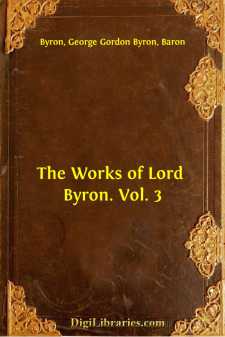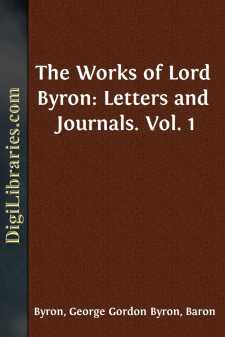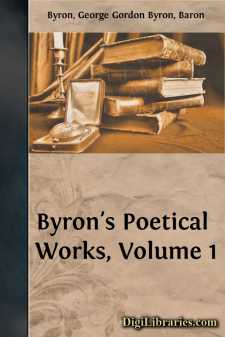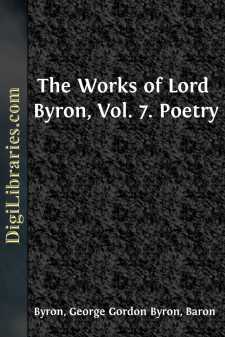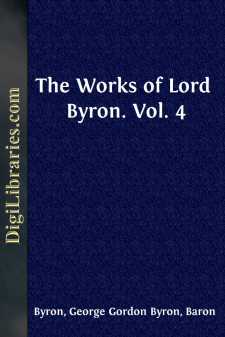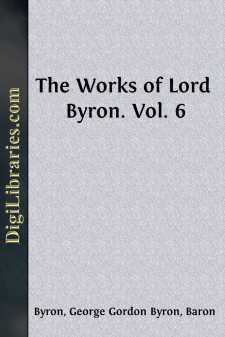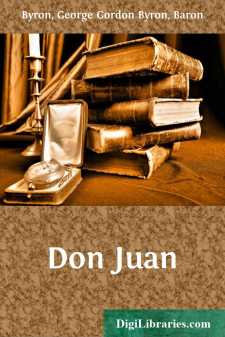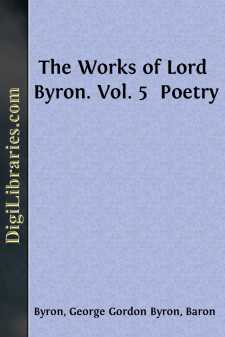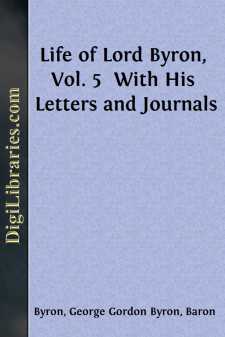Categories
- Antiques & Collectibles 13
- Architecture 36
- Art 48
- Bibles 22
- Biography & Autobiography 813
- Body, Mind & Spirit 142
- Business & Economics 28
- Children's Books 17
- Children's Fiction 14
- Computers 4
- Cooking 94
- Crafts & Hobbies 4
- Drama 346
- Education 46
- Family & Relationships 57
- Fiction 11829
- Games 19
- Gardening 17
- Health & Fitness 34
- History 1377
- House & Home 1
- Humor 147
- Juvenile Fiction 1873
- Juvenile Nonfiction 202
- Language Arts & Disciplines 88
- Law 16
- Literary Collections 686
- Literary Criticism 179
- Mathematics 13
- Medical 41
- Music 40
- Nature 179
- Non-Classifiable 1768
- Performing Arts 7
- Periodicals 1453
- Philosophy 64
- Photography 2
- Poetry 896
- Political Science 203
- Psychology 42
- Reference 154
- Religion 513
- Science 126
- Self-Help 84
- Social Science 81
- Sports & Recreation 34
- Study Aids 3
- Technology & Engineering 59
- Transportation 23
- Travel 463
- True Crime 29
The Works of Lord Byron. Vol. 3
Categories:
Description:
Excerpt
INTRODUCTION TO THE OCCASIONAL PIECES
(POEMS 1809-1813; POEMS 1814-1816).
The Poems afterwards entitled "Occasional Pieces," which were included in the several editions of the Collected Works issued by Murray, 1819-1831, numbered fifty-seven in all. They may be described as the aggregate of the shorter poems written between the years 1809-1818, which the author thought worthy of a permanent place among his poetical works. Of these the first twenty-nine appeared in successive editions of Childe Harold (Cantos I., II.) «viz. fourteen in the first edition, twenty in the second, and twenty-nine in the seventh edition», while the thirtieth, the Ode on the Death of Sir Peter Parker, was originally attached to Hebrew Melodies. The remaining twenty-seven pieces consist of six poems first published in the Second Edition of the Corsair, 1814; eleven which formed the collection entitled "Poems," 1816; six which were appended to the Prisoner of Chillon, December, 1816; the Very Mournful Ballad, and the Sonnet by Vittorelli, which accompanied the Fourth Canto of Childe Harold, 1818; the Sketch, first included by Murray in his edition of 1819; and the Ode to Venice, which appeared in the same volume as Mazeppa.
Thus matters stood till 1831, when seventy new poems (sixty had been published by Moore, in Letters and Journals, 1830, six were republished from Hobhouse's Imitations and Translations, 1809, and four derived from other sources) were included in a sixth volume of the Collected Works.
In the edition of 1832-35, twenty-four new poems were added, but four which had appeared in Letters and Journals, 1830, and in the sixth volume of the edition of 1831 were omitted. In the one-volume edition (first issued in 1837 and still in print), the four short pieces omitted in 1832 once more found a place, and the lines on "John Keats," first published in Letters and Journals, and the two stanzas to Lady Caroline Lamb, "Remember thee! remember thee," first printed by Medwin, in the Conversations of Lord Byron, 1824, were included in the Collection.
The third volume of the present issue includes all minor poems (with the exception of epigrams and jeux d'esprit reserved for the sixth volume) written after Byron's departure for the East in July, 1809, and before he left England for good in April, 1816.
The "Separation" and its consequent exile afforded a pretext and an opportunity for the publication of a crop of spurious verses. Of these Madame Lavalette (first published in the Examiner, January 21, 1816, under the signature B.B., and immediately preceding a genuine sonnet by Wordsworth, "How clear, how keen, how marvellously bright!") and Oh Shame to thee, Land of the Gaul! included by Hone, in Poems on his Domestic Circumstances, 1816; and Farewell to England, Ode to the Isle of St. Helena, To the Lily of France, On the Morning of my Daughter's Birth, published by J. Johnston, 1816, were repudiated by Byron, in a letter to Murray, dated July 22, 1816. A longer poem entitled The Tempest, which was attached to the spurious Pilgrimage to the Holy Land, published by Johnston, "the Cheapside impostor," in 1817, was also denounced by Byron as a forgery in a letter to Murray, dated December 16, 1816.
The Triumph of the Whale, by Charles Lamb, and the Enigma on the Letter H, by Harriet Fanshawe, were often included in piratical editions of Byron's Poetical Works. Other attributed poems which found their way into newspapers and foreign editions, viz. (i.) To my dear Mary Anne, 1804, "Adieu to sweet Mary for ever;" and (ii.) To Miss Chaworth, "Oh, memory, torture me no more," 1804, published in Works of Lord Byron, Paris, 1828; (iii.) lines written In the Bible, "Within this awful volume lies," quoted in Life, Writings, Opinions, etc., 1825, iii. 414; (iv.) lines addressed to (?) George Anson Byron, "And dost thou ask the reason of my sadness?" Nicnac, March 29, 1823; (v.) To Lady Caroline Lamb, "And sayst thou that I have not felt," published in Works, etc., 1828; (vi.) lines To her who can best understand them, "Be it so, we part for ever," published in the Works of Lord Byron, In Verse and Prose, Hartford, 1847; (vii.) Lines found in the Travellers' Book at Chamouni, "How many numbered are, how few agreed!" published Works, etc., 1828; and (viii.) a second copy of verses with the same title, "All hail, Mont Blanc! Mont-au-Vert, hail!" Life, Writings, etc., 1825, ii. 384; (ix.) Lines addressed by Lord Byron to Mr. Hobhouse on his Election for Westminster, "Would you get to the house by the true gate?" Works, etc., 1828; and (x.) Enigma on the Letter I, "I am not in youth, nor in manhood, nor age," Works, etc., Paris, p....


